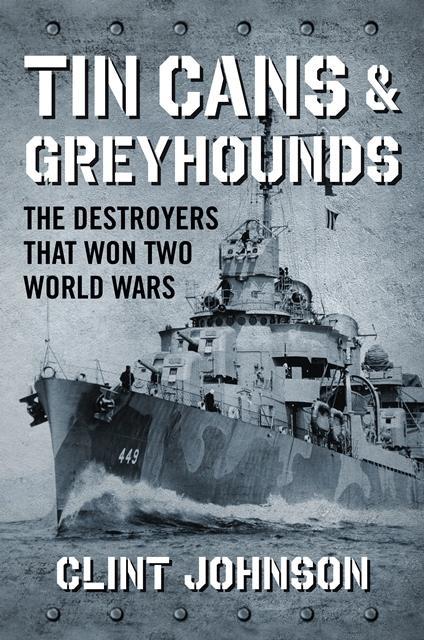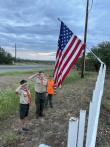The American battleships may have been the targets of the Japanese at Pearl Harbor on Dec. 7, 1941, but those were the wrong targets.
Instead of bombing pre-World War I vintage battleships, the Japanese should have gone after the 55 destroyers based at Pearl. The six battleships refloated at Pearl Harbor won only 42 battle stars for the rest of the war. The Pearl-based destroyers won 438 battle stars, meaning they were engaged in 438 battles.
Looking at the big picture, it is clear that American destroyers and destroyer escorts were the true work horses for the U.S. Navy surface fleet during World War II. All American destroyers in both ocean conflicts won 3,140 battle stars. Destroyer escorts won 668 battle stars. American battleships and cruisers won a combined 545 battle stars during the war.
Clint Johnson’s TIN CANS & GREYYHOUNDS: The Destroyers That Won Two World Wars (Regnery History, Washington, D.C., Feb. 2019) details the history of destroyers from 1874 through the end of World War II. He covers the destroyers of Great Britain (which developed the ship type), Japan (which refined the type in the 1920’s), United States (which perfected it with the Fletcher and Allen M. Sumner classes) and Germany (which designed lousy destroyers that failed in their first major battle).
Johnson also covers the American development of the destroyer escort, the scaled down version of the destroyer specifically designed to sail slower so it could move at the speed of the slowest of the merchant ships in convoys. It was the DE that scored the highest kill rate of Japanese submarines, ended the domination of the U-boat in the Atlantic, and provided some of the most dramatic sea stories of World War II. One DE was boarded by German sailors – the first time an American ship had been boarded by an enemy since the War of 1812.
Johnson details how the Japanese frightened the supposed world powers twice; once when its destroyers helped decimate the Russian Fleet in 1905, and again in 1928 when its far superior Fubuki class destroyer was introduced. Great Britain might not have lasted through 1917 had the U.S. not sent its entire fleet of destroyers to Ireland, France and the Mediterranean to escort merchant ships.
It was disarmament talks in the 1930s that ironically allowed the U.S. to modernize its aging WW I-era fleet of destroyers. Still, those remaining WW-I era destroyers played major roles in winning WW II when many were converted to fast attack transports, mine layers, mine sweepers, and seaplane tenders.
It was British Destroyer men who captured the first German Enigma machines and codes to help break the German codes and help convoys plan safer routes across the Atlantic. It was British destroyer men who sank 10 of the entire German fleet of 22 destroyers in one battle.
Finally, it was American destroyers which scored the first American surface action victory at Balikpapan in January 1942; which pushed back the Japanese reinforcement efforts at Guadalcanal for six months; which provided close-in support for the Normandy landings; which raced into overwhelming odds at Leyete Gulf in October 1944; and which spotted the kamikazes for the rest of the Navy for the last eight months of the war.




